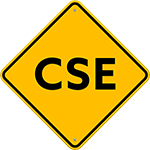Four Major OSHA Mistakes to Avoid in 2020
Anybody who works in an industrial or manufacturing field knows how important OSHA compliance is. The Occupational Safety and Health Administration is responsible for policing work sites for unsafe practices and any infraction can incur a major fine or even halt operations.
Maintaining perfect compliance is certainly a challenge, but knowledge and planning ahead can help. You need to ensure that you stay clear of any costly OSHA mistakes, including the following four common ones, as you head into 2020.
Lack of Fall Protection or Scaffolding
When you think about the risk of falling or the need for scaffolding, you might imagine a construction site and indeed these standards are important in the construction industry.
When it comes to fall risk, every industry needs to be proactive in preventing any potential accidents and maintaining OSHA standard compliance. If you are working at elevated heights, scaffolding is absolutely imperative to ensure safety and compliance.
Exposure to Respiratory Risk Without Protection
There are many environments where staff are exposed to respiratory risks, but this risk can usually be mitigated by the use of personal protective equipment (PPE). If an employer does not provide PPE, employees may be exposed to such risks and suffer unnecessary injury.
It is vital that respirators be available and worn by staff in any area where there may be airborne hazards.
Insufficient or Improper Hazard Communication
Lack of hazard communication is yet another common OSHA infraction that must be avoided at all costs. Hazards are inevitable in the workplace, but if there is a known risk present, it is absolutely imperative that it be announced and identified properly.
Further, employers must provide clear instructions to employees in order to ensure they are able to avoid the hazard. Failure to comply with this OSHA standard is incredibly dangerous.
Risk of Lockout/Tagout
At some point, the machinery in your workplace will need to be serviced or repaired by a professional. Whether it’s quick routine maintenance or a lengthy repair, you need to ensure that the personnel completing the work is safe while they service the machine.
If a piece of equipment were to power on while it is being serviced, it would likely cause serious injury or even death to the maintenance professional. A lockout or tagout is used to isolate the energy produced by a machine or prevent its operation until the maintenance is complete.
Failure to utilize this precaution can be a deadly OSHA violation.
If you want to ensure all your bases are covered and you are OSHA compliant, Construction Safety Experts can help. Contact our team of professionals online or call (866) 463-0669.
Visit safety-xperts.com for a full list of our services and expertise today.





